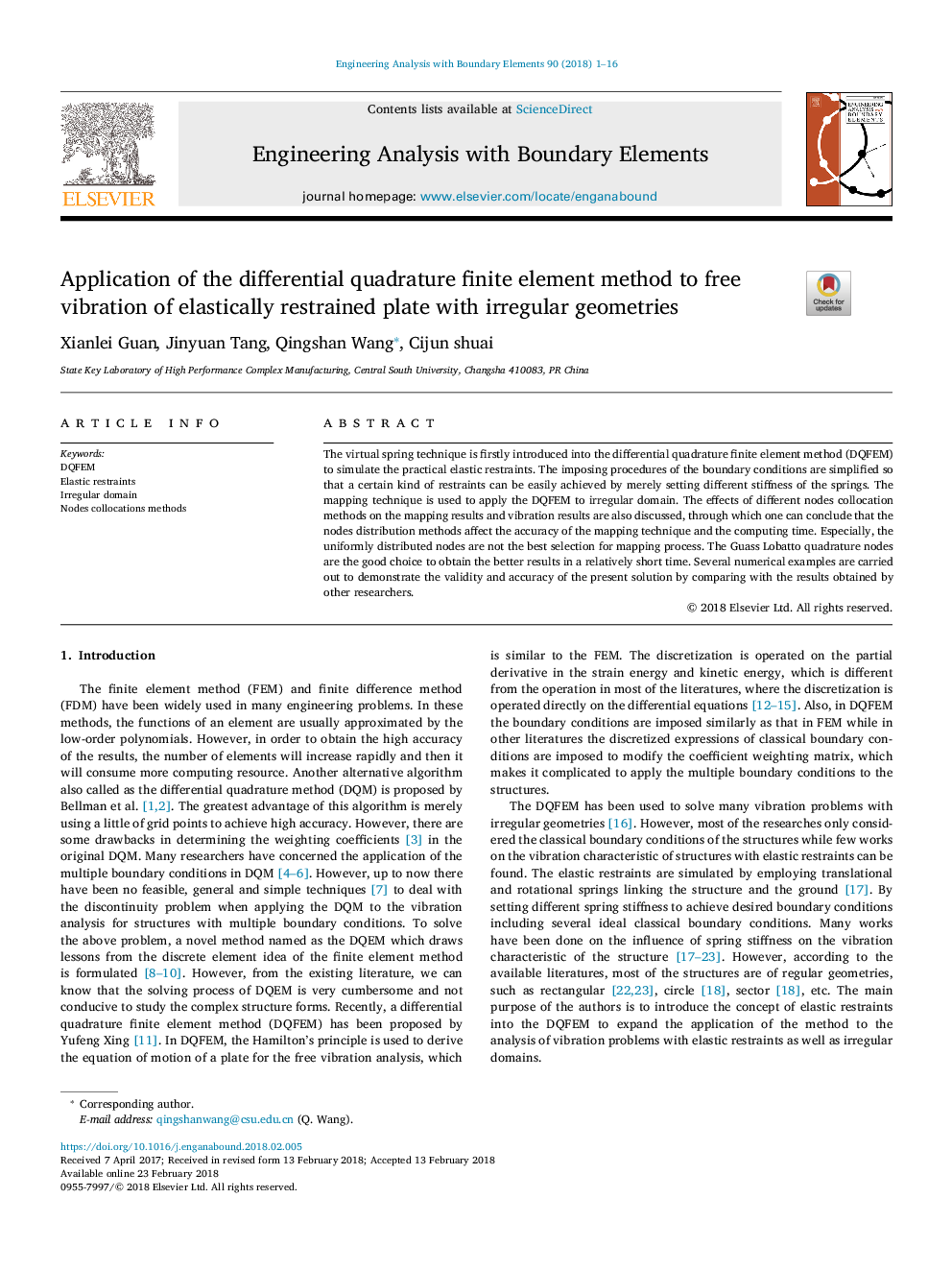| Article ID | Journal | Published Year | Pages | File Type |
|---|---|---|---|---|
| 6924991 | Engineering Analysis with Boundary Elements | 2018 | 16 Pages |
Abstract
The virtual spring technique is firstly introduced into the differential quadrature finite element method (DQFEM) to simulate the practical elastic restraints. The imposing procedures of the boundary conditions are simplified so that a certain kind of restraints can be easily achieved by merely setting different stiffness of the springs. The mapping technique is used to apply the DQFEM to irregular domain. The effects of different nodes collocation methods on the mapping results and vibration results are also discussed, through which one can conclude that the nodes distribution methods affect the accuracy of the mapping technique and the computing time. Especially, the uniformly distributed nodes are not the best selection for mapping process. The Guass Lobatto quadrature nodes are the good choice to obtain the better results in a relatively short time. Several numerical examples are carried out to demonstrate the validity and accuracy of the present solution by comparing with the results obtained by other researchers.
Keywords
Related Topics
Physical Sciences and Engineering
Computer Science
Computer Science Applications
Authors
Guan Xianlei, Tang Jinyuan, Wang Qingshan, shuai Cijun,
